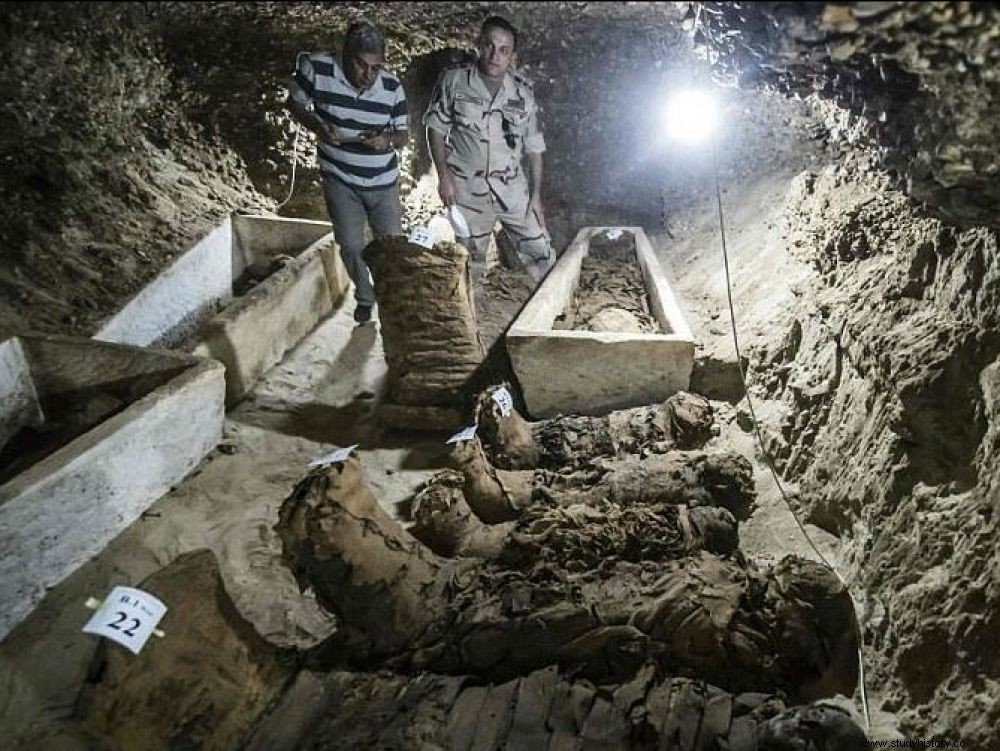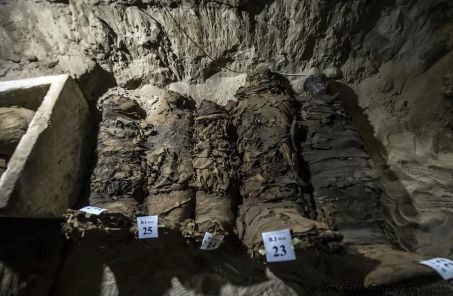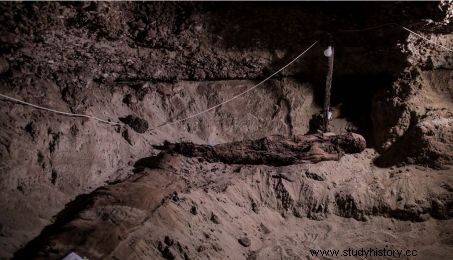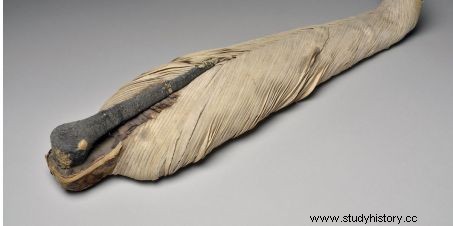Seventeen mummies have just been unearthed in catacombs in central Egypt.

Recent discoveries of mummies in the catacombs of Tounah el-Gebel, in Middle Egypt.
Superstar Mummies! After the 8 Pharaonic period mummies discovered in April 2017 in the Valley of the Kings, the flashes crackled again, this time in the underground passages of the necropolis of Tounah el-Gebel (or Tuna el Gebel), in Middle Egypt, on the left bank of the Nile, near al-Minia, 240 kilometers south of Cairo. There, in the countless galleries dug by the ancient Egyptians, 17 mummies were found, in the environment of an already famous cemetery. This one has indeed delivered to archaeologists millions of mummies of ibis and baboons, offerings of sacred animals dedicated to the god Thoth, discovered on about fifteen hectares between 1931 and 1954 by Sami Gabra of the University of Cairo. (Egypt). Tuna el Gebel was indeed the late-period necropolis of Hermopolis Magna, the city built in honor of Thoth, the time lord who possessed knowledge.

Among the mummies of Tounah el-Gebel, women and children, but also probably priests. © AFP
"This is the first human necropolis unearthed at Tounah el-Gebel ", declared to the audience of journalists who accompanied him the Minister of Egyptian Antiquities Khaled al-Anani. "S carefully preserved, these mummies probably belong to officials and priests “, said the daily Ahram Online Salah El-Kholi, the archaeologist responsible for the excavations at Cairo University.

Other mummies discovered in the necropolis of al-Minia, Egypt. © Samer Abdallah/Analodu Agency/AFP
The cavity that contained them was detected in 2016, at a depth of 8 meters, randomly through geophysical explorations carried out by experts from the Faculty of Natural Sciences of Cairo University. This work, which has only just begun, should reveal the existence of other mummies. Still according to the Egyptian authorities, this discovery also includes two clay coffins, six sarcophagi carved in limestone, as well as two papyri, epigraphic remains covered with demotic script (ancient Egyptian written in simplified characters used during the last pharaonic dynasties).

Ibis mummy from the Ptolemaic period (4th BC). They were found by the thousands in the necropolis of al-Minia, in the first half of the XX th century. © Jean Bernard/Leemage/AFP
These precious remains were immediately sent to the restoration laboratories of the new Grand Egyptian Museum (GEM). This funerary complex could date back to the Ptolemaic period, the last Egyptian pharaonic dynasty of Hellenistic lineage, before the country of the pharaohs fell under the domination of Rome, in the 1 st century BC
Mummification
In Egypt, voluntary mummification only appeared around 2500 BC. JC, when the embalmers began to practice evisceration – the extraction of internal organs –, followed by chemical treatments. The goal is to limit the alteration of the bodies as much as possible. Originally intended only for the treatment of the body of sovereigns, this process reached the popular classes around the 4th century BC.
